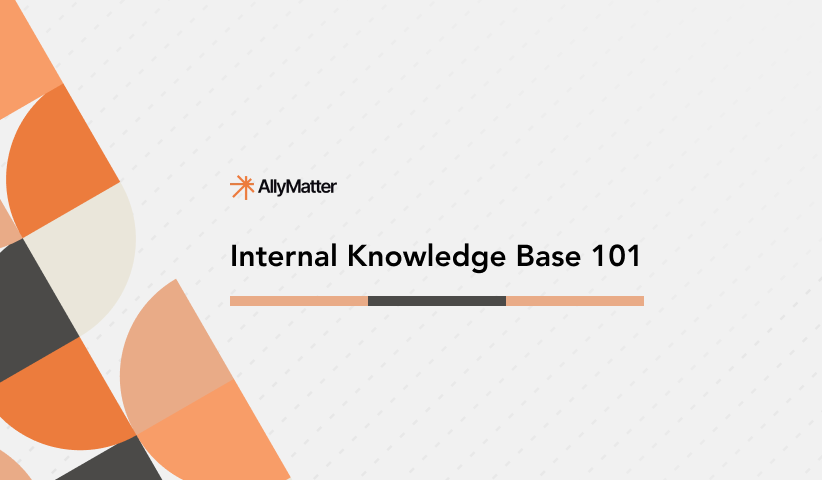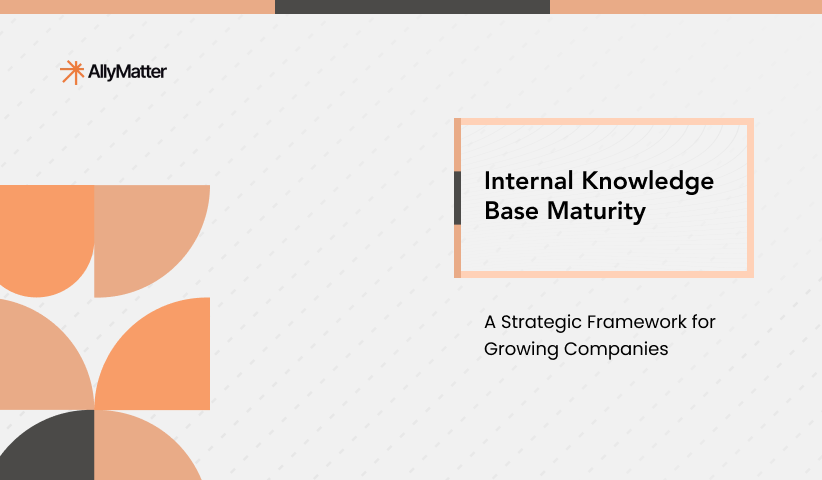The scene is familiar: Your company is growing rapidly, new team members are joining every week, and suddenly the shared Google Drive that seemed perfectly adequate six months ago has become a labyrinth of folders within folders. Your team spends hours searching for documents, processes are inconsistently documented, and valuable knowledge walks out the door with every departing employee.
For growing companies, especially those scaling between 50 and 500 employees, the evolution of internal knowledge management isn’t just a nice-to-have; it’s a critical factor in sustaining growth. Understanding where you are in your knowledge base maturity journey, and where you need to go next, can mean the difference between scaling smoothly and hitting devastating operational bottlenecks.
Understanding knowledge base evolution
The true cost of poor knowledge management often remains hidden until it’s too late. A growing company loses an average of 20 hours per employee per month to searching for information, recreating existing documents, and asking colleagues for help. For a company with 100 employees, this translates to 2,000 lost hours monthly – equivalent to having 12 fewer full-time employees.
A maze of tools is eating our time.
The workplace is a maze of tools, from messaging apps and cloud storage systems, to project management software, and more. In a typical day, people spend 59 minutes simply looking for information trapped within tools and applications. That’s up to 5 hours a week , just trying to find what we need. Unsurprisingly, about 7 in 10 people (69%) report that finding the information to do their job is time-consuming.Source: Workgeist Report ‘21
Take a common scenario: Your customer success team handles implementation processes for enterprise clients. Without proper documentation, each manager develops their own approach, leading to inconsistent customer experiences and repeated mistakes. When a manager leaves, their replacement spends months reconstructing processes, while customer satisfaction scores drop and churn risk increases.
Implementation challenges and solutions
Challenge 1: Resistance to documentation
Many fast-growing companies face strong resistance to documentation efforts. Teams often view documentation as bureaucratic overhead that slows down their “move fast” culture. This resistance typically manifests as:
Common resistance patterns include:
1. “We’re too busy to document right now.”
2. “Our processes change too quickly to document.”
3. “Everyone knows how to do their job.”
4. “We can document later when we’re bigger.”
Solution framework:
Start with critical pain points where lack of documentation is actively hurting the business:

Measuring success: Key performance indicators
Successful knowledge management requires clear metrics at each stage. Here are the essential KPIs to track:
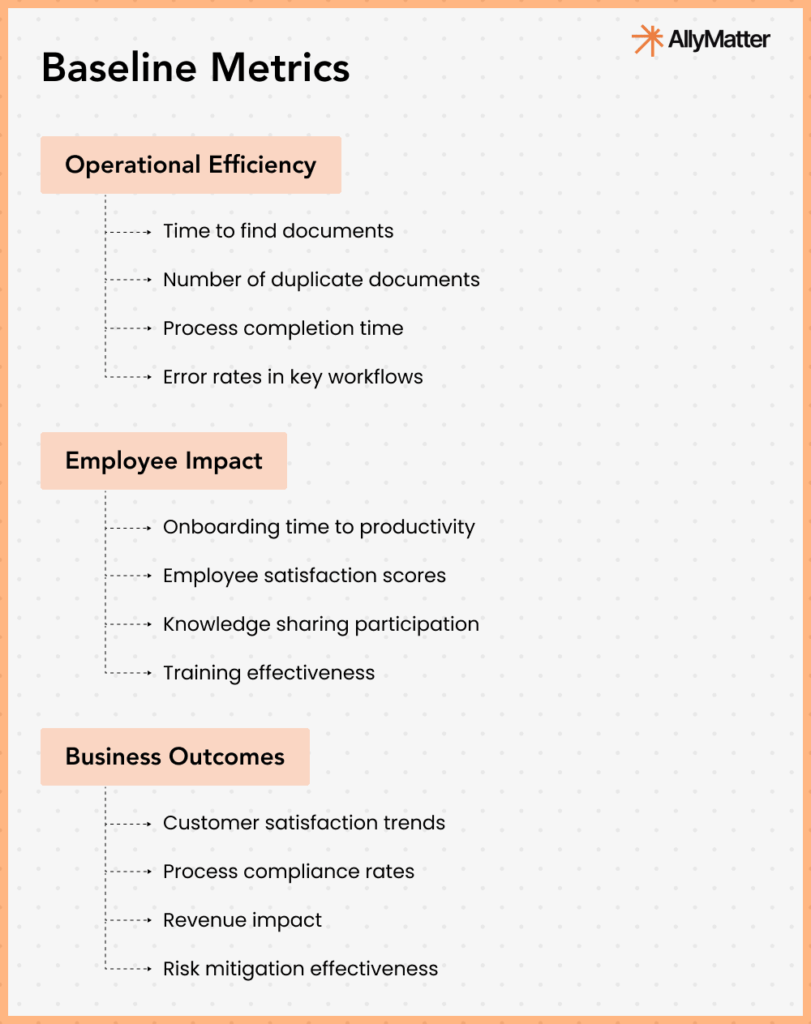
Stage 1: Ad-hoc documentation state
At this stage, documentation exists primarily in email threads, chat messages, and personal drives. There’s no central system, and finding information depends largely on knowing who to ask.
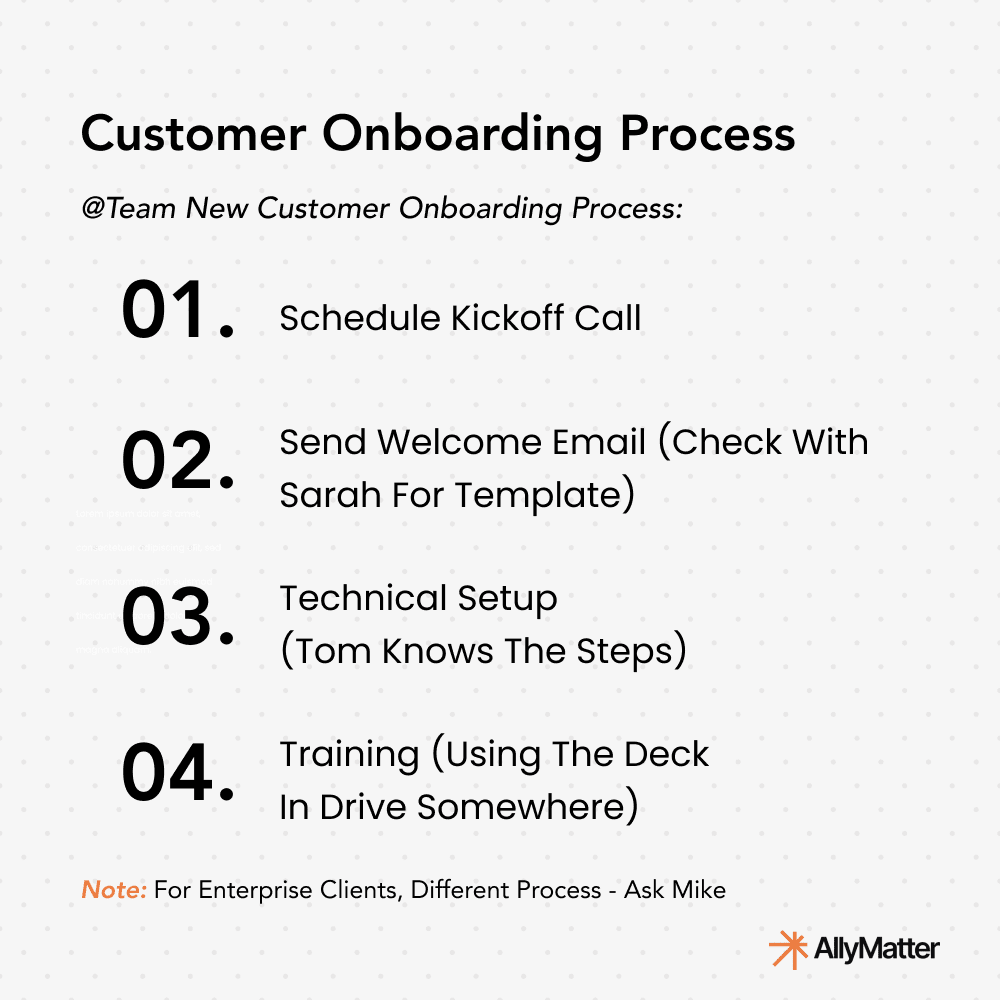
Implementation challenges at stage 1
The ad-hoc stage presents specific operational challenges that directly impact growth:
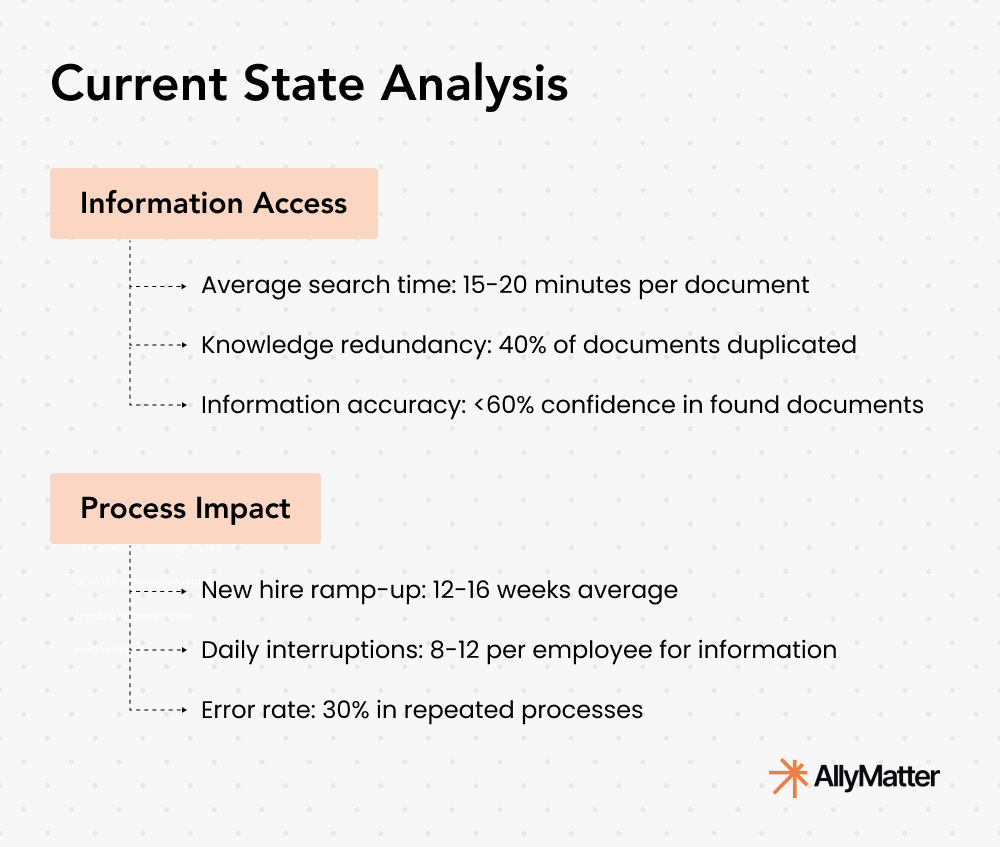
Common stage 1 bottlenecks
Most growing companies at Stage 1 face these critical issues:
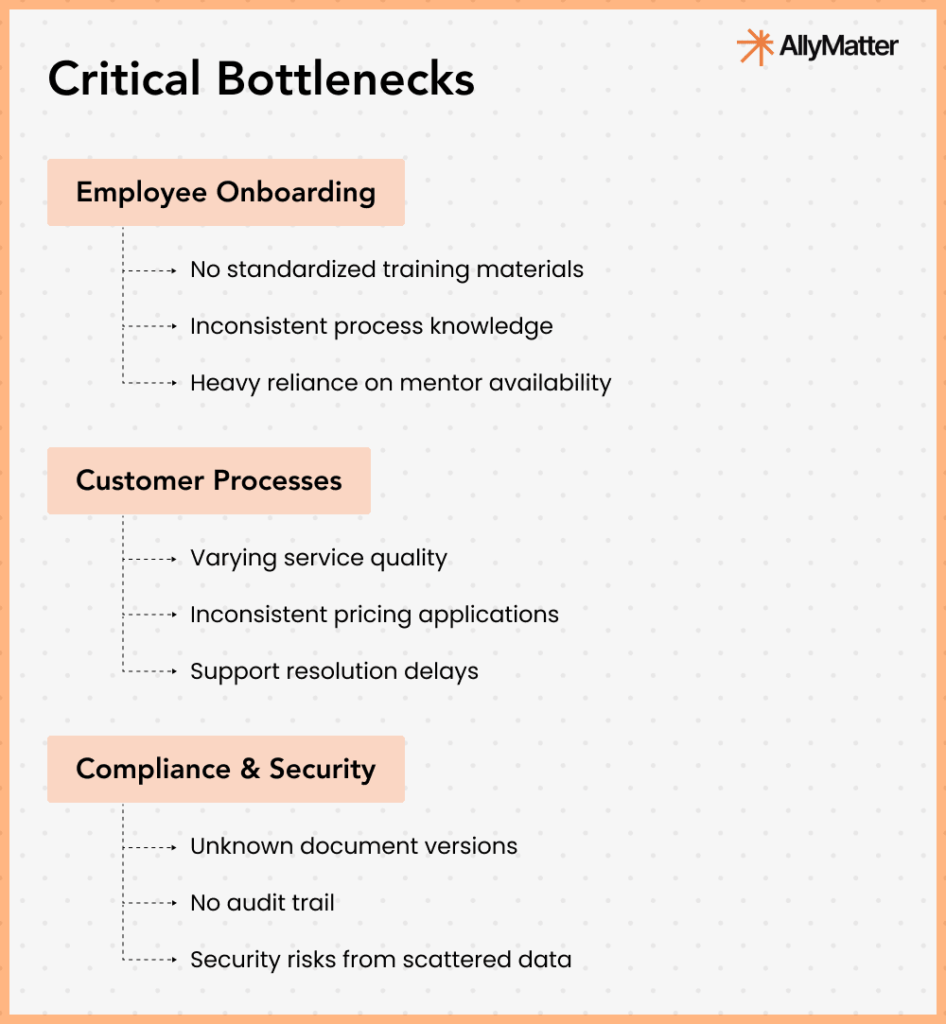
Stage 2: Centralization efforts
At this stage, organizations move toward basic centralization. While this represents progress, it introduces new challenges that require specific solutions.
Example of stage 2 documentation:

Stage 2 implementation framework
Moving to centralization requires a structured approach:
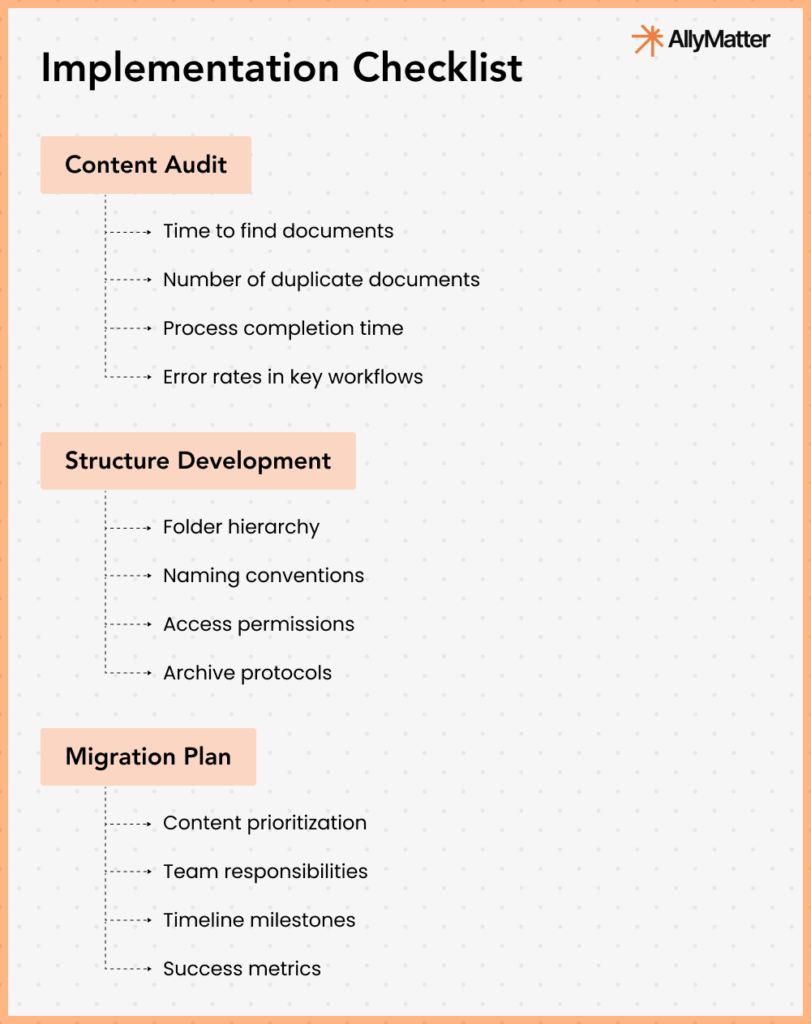
Measuring stage 2 progress
Key metrics to track during centralization:

Stage 3: Structured approach
At this stage, organizations implement proper knowledge base systems with structured categorization and clear ownership.
Example of stage 3 documentation system:
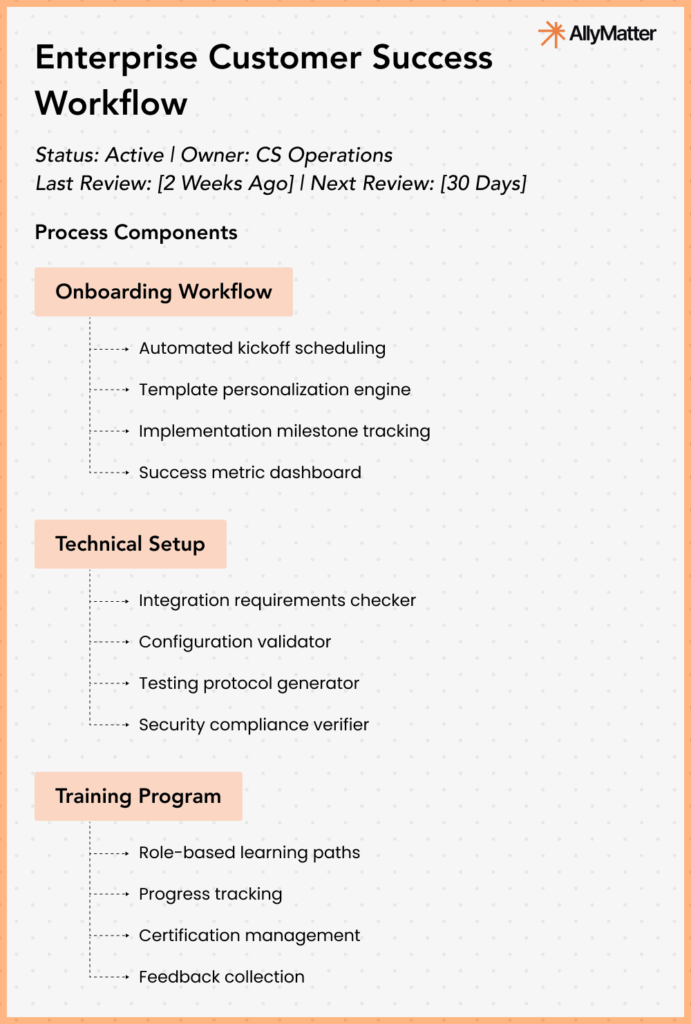
Stage 3 implementation framework
Success at Stage 3 requires systematic change management and clear metrics:

Stage 4: Process integration
At this stage, knowledge management becomes embedded in work processes. Documentation isn’t an afterthought – it’s generated and updated through normal workflows.
Example of stage 4 process integration:
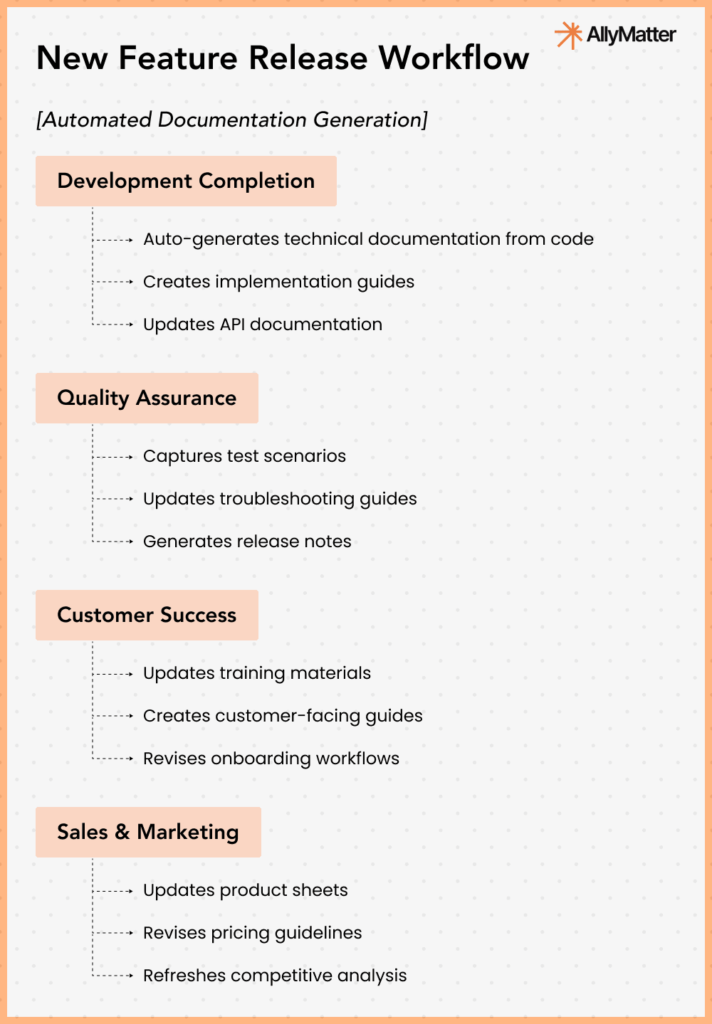
Stage 4 implementation challenges
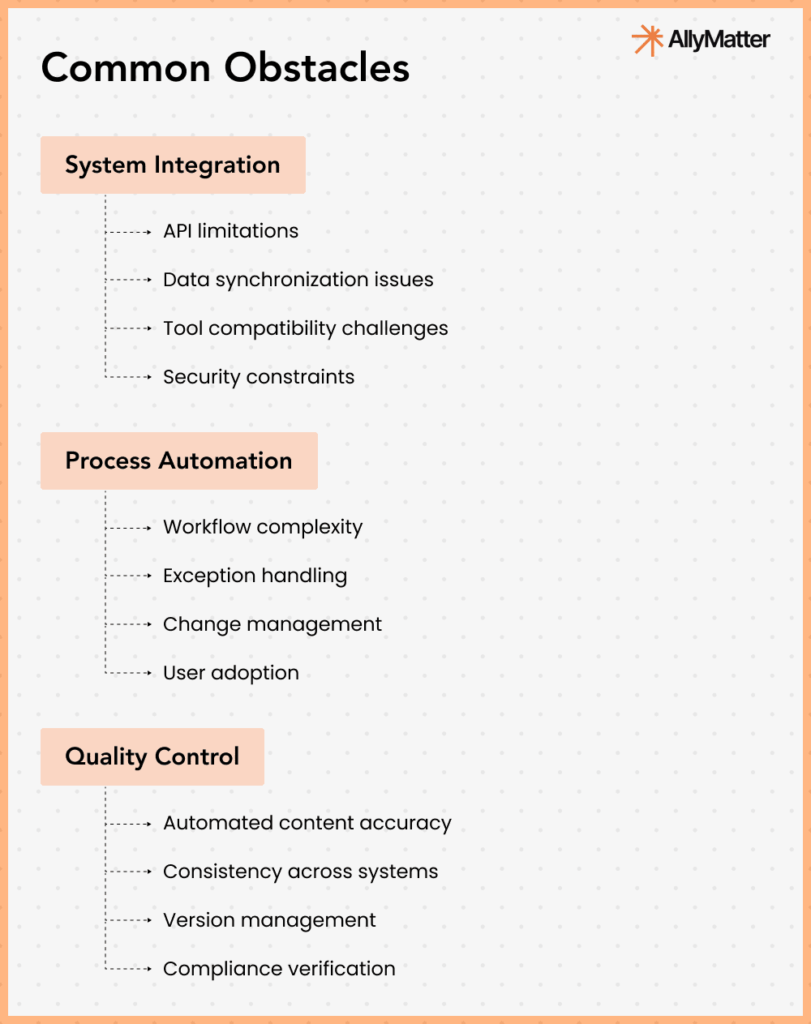
Stage 5: Knowledge-driven organization
At the highest maturity level, knowledge management becomes a strategic advantage, actively supporting decision-making and organizational learning.
Example of stage 5 knowledge system:

The AllyMatter approach
AllyMatter supports organizations through each maturity stage with targeted solutions:
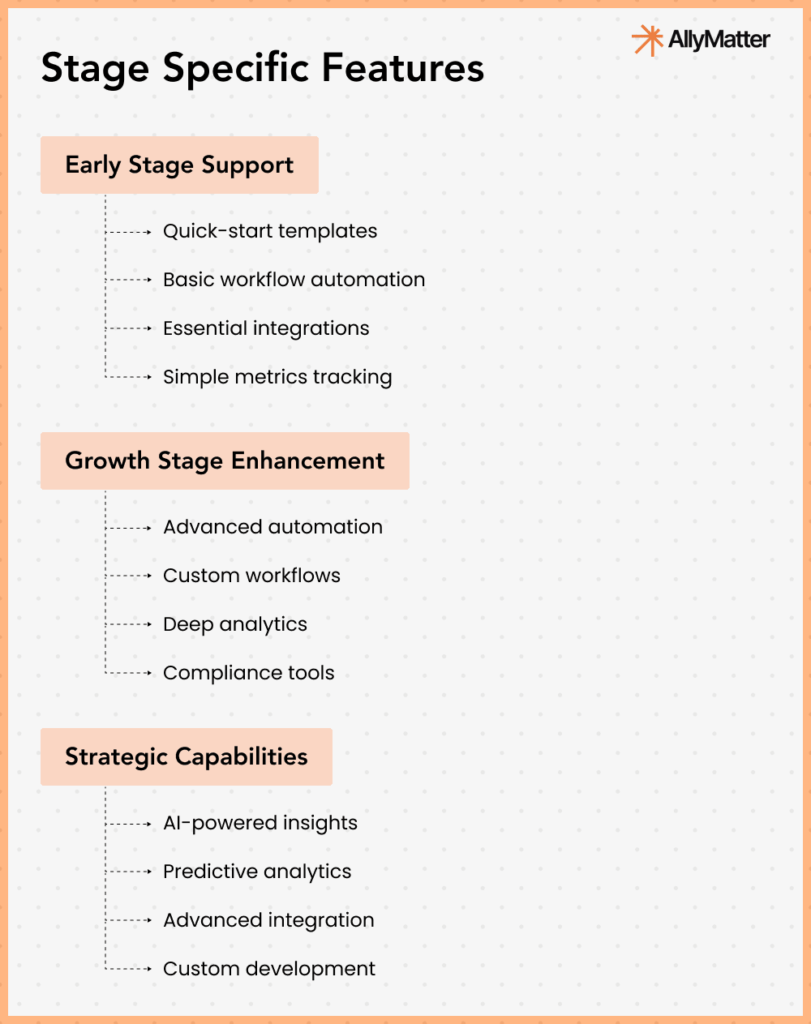
Moving forward: Implementation strategy
Success in knowledge base maturity requires a phased approach:
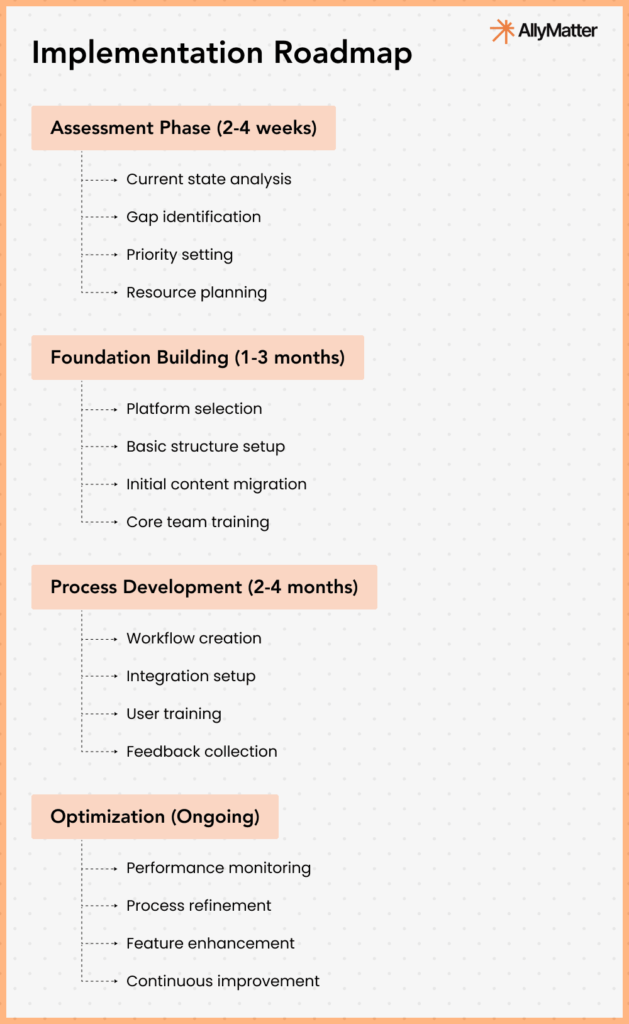
The journey to knowledge base maturity is not about achieving perfection; it’s about continuous improvement and adaptation to your organization’s evolving needs. Each stage builds upon the previous one, creating a stronger foundation for sustainable growth.
Remember, the most successful implementations start with clear objectives, measure progress consistently, and adapt based on real user feedback. Begin with your most pressing challenges, celebrate early wins, and build momentum toward your long-term knowledge management goals.
Ready to advance your knowledge base maturity? Join our waitlist to be among the first to experience how AllyMatter can transform your growing company’s documentation challenges into competitive advantages.
Frequently asked questions
What is the biggest mistake companies make when advancing knowledge base maturity?
Skipping stages or trying to implement advanced features before establishing basic documentation discipline. Most growing companies attempt to jump directly to Stage 4 automation without completing the foundational work of Stages 1-3, leading to complex systems that nobody uses effectively.
How long does it typically take to move from Stage 1 to Stage 3?
For companies with 50-500 employees, the transition typically takes 6-18 months depending on organizational commitment and resource allocation. Stage 1 to Stage 2 usually requires 2-4 months, while Stage 2 to Stage 3 takes 4-8 months with proper change management.
What are the warning signs that your knowledge base maturity is falling behind your growth?
Key indicators include new employees taking longer than 8 weeks to reach productivity, the same questions being asked repeatedly across teams, critical processes failing when key employees are unavailable, and departments creating duplicate documentation for the same processes.
Should growing companies invest in knowledge management platforms early or wait until they’re larger?
Companies should establish basic knowledge management discipline by 50 employees, but can start with simple tools. The platform investment becomes critical between 100-200 employees when manual processes become unsustainable and knowledge loss significantly impacts operations.
